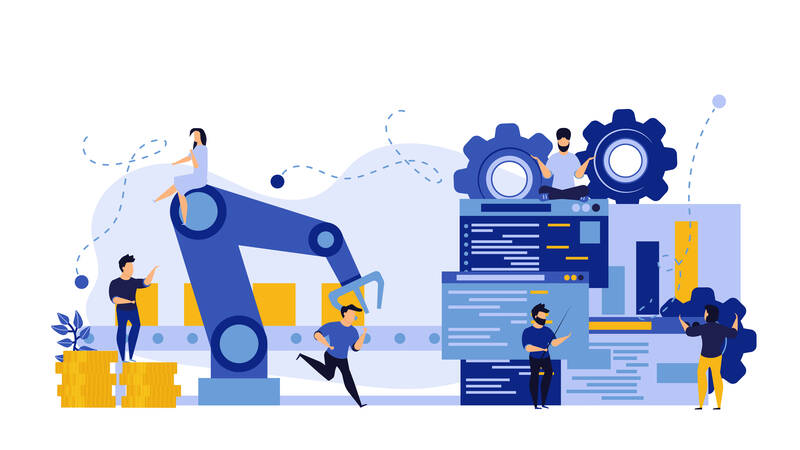Finding the right IR4.0 tools will put you on the right path on your digital transformation journey
The buzz surrounding Industry 4.0 (IR4.0) was strong a decade ago and still remains relevant today. While industry players were given the same headstart when it first emerged, many are still grappling with it - failing still to leverage the innovations that are deemed “entry-level” by some. In order to understand what IR4.0 look like, one must clearly define the term. It is, essentially, what you need it to be - a solution, an enabler, a second chance.
In this case, let us examine it as a highly specialised technology toolbox. Industrial Internet of Things (IIoT) sensors, additive manufacturing, wearables, Advanced Robotics, Big Data, Virtual and Augmented Reality, Artificial Intelligence, Machine Learning and many more are in this toolbox. At its core, IR4.0 is the harnessing of these tools in real-time to stimulate improvements by utilising digitised data to augment processes and business operations.
One hindrance to this is the fact that enterprises lack direction, funding and support. Misconceptions are rampant and many believe that this advancement is a bank-breaking short-term endeavour. This is far from the truth as improvements can be made progressively and it begins with some introspection.
 Your employees, perhaps more than any tool, will drive adoption rates with the proper framework and ROIs in place
Your employees, perhaps more than any tool, will drive adoption rates with the proper framework and ROIs in place
Homing in on Fundamentals
Fundamentally, business owners would want to see operational and quantifiable results. If IR4.0 provides a cornucopia of tools to accelerate progress and improve performance, why do companies then fall behind? How do we measure improvement with these tools? Is there any difference between manufacturing then and now? IR 4.0 tools can impact the business in the following aspects:
- Product quality
- Cost optimisation
- Effective supply & demand planning
- Productive employees
- Optimised throughput
- Safety and health
IR4.0 laggards typically lack strategic vision at the enterprise level. They typically prefer the status quo as the fear of the unknown propels them to stick with legacy systems as long as marginal improvements can be seen. On the other hand, there are those who have the Fear of Missing Out and do not understand IR4.0 elements as a cohesive whole; thus, losing sight of the broader context.
Often, business owners equate advancement to huge investments in new and expensive software and hardware infrastructure. This will culminate in a huge drain of resources and eventually become “too big to handle”. The truth is, advancement is not necessarily synonymous with massive investments in new ERP and It infrastructure. Too much focus is given on costs without much understanding of the qualitative and quantitative, measurable benefits. Therefore, it is imperative to take a bite-sized approach and construct a plan around the fundamentals. Focus instead on value-added activities instead of reactive observations.
Addressing the Issue
First and foremost, leaders need to broaden the conversation to the needs of the organisation and not be solely focused on technology. A leader needs to drive the advancement pathway towards organisational agility and resilience; in times of uncertainty, this could be the difference between unemployment and job security for internal stakeholders.
Embrace a digital vision. This is a detailed introspection of where your organisation is today, and where it will be in the coming years. Probing questions such as: What do you want to achieve? Or what ecosystem you want to create? Will be vital to the strategic process. Plan with a higher degree of certainty in the short term so that Operations possess a greater degree of input and understanding to drive the organisation towards desired outcomes with the technology toolbox.
Construct a roadmap. Think big but focus small. Determine what areas you would like to see an immediate impact. This allows you to focus on incremental steps that have scalability rather than position yourself as an “end to end” solution that encompasses all but might set yourself up for failures.
People power. Change of processes and management takes a toll on the employees. For a shift to occur, the people with you must play an integral row in the process. With the right tools, knowledge and information, any business leader could avoid fear and dissension amongst the ranks. The right culture drives quicker adoption, better visibility and efficiency as employees are able to obtain real-time actionable insights to exact the change.
Finding the right fit. IR4.0 tools are there to make your life easier if only the right ones are selected. Avoid jumping on the bandwagon and focus on the right investment that will help you attain your immediate goals. It need not be a total replacement of the conventional but can be integrated into legacy systems and equipment without incurring a huge cost. A strong ROI will rely on a measured and incremental approach.
Supported by the right framework. In order for all the pieces to come together, you will need to have the right framework in terms of decision making. Determine what data you would like to collect; how will it be interpreted to support the KPIs and do any KPIs compete across functional groups? An accurate picture is needed in this digital environment. No information should be held in silos!
Measuring Impact. How does one determine an accurate ROI? The mechanism for this lies in tracking and evaluation. Overall Equipment Effectiveness (OEE) can be observed with the right tools and should lead to a surge in throughput. What about human impact? A better sense of empowerment for an operator will translate to reduced turnover, absenteeism and an overall improvement in attitude. These successes will thus put you on the right path on your digital journey.
Key Takeaways
The journey to digital enlightenment is unique to your organisation yet need not be done alone. Wherever you are on the journey, finding the right tools, the right fit, will generate a treasure trove of data and insights for better management and competitiveness in the market. This shift of paradigms need not be radical or revolutionary; take a bite-sized approach and manage it by stages. People are resistant to change and when it comes to the human element, a delicate but firm approach is needed to avoid failures.
This article was adapted from Steve Boughton’s article published on IndustryWeek.com



